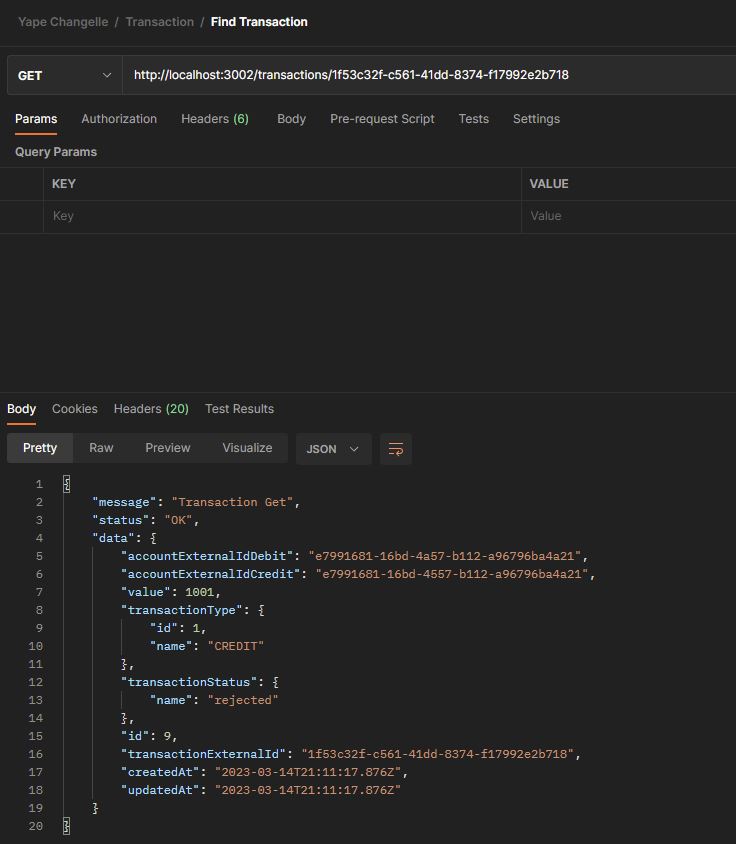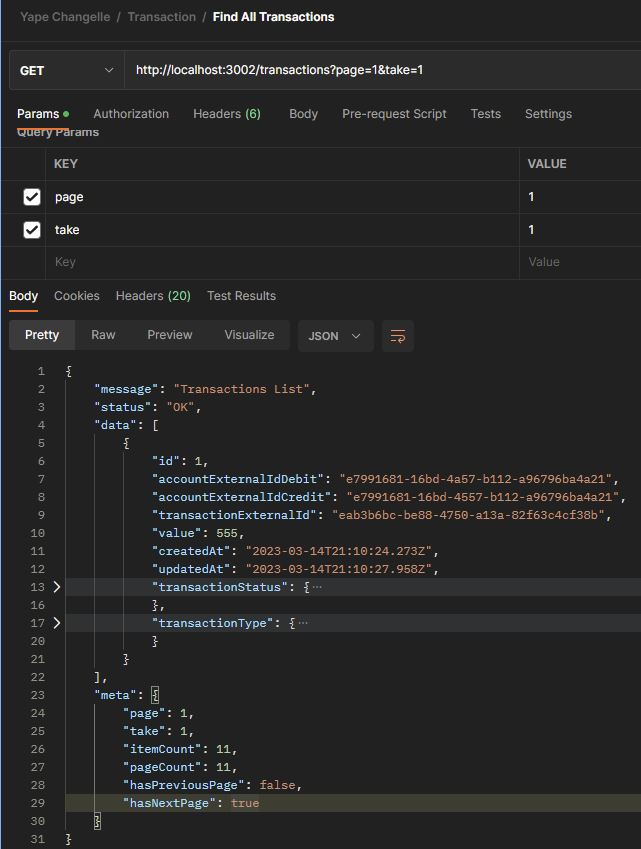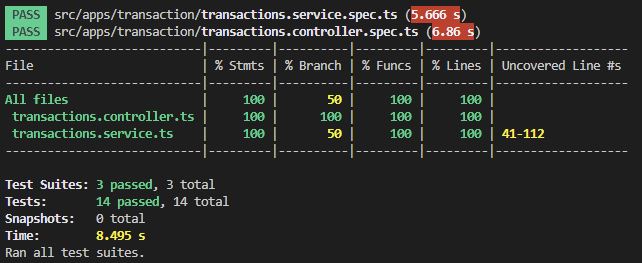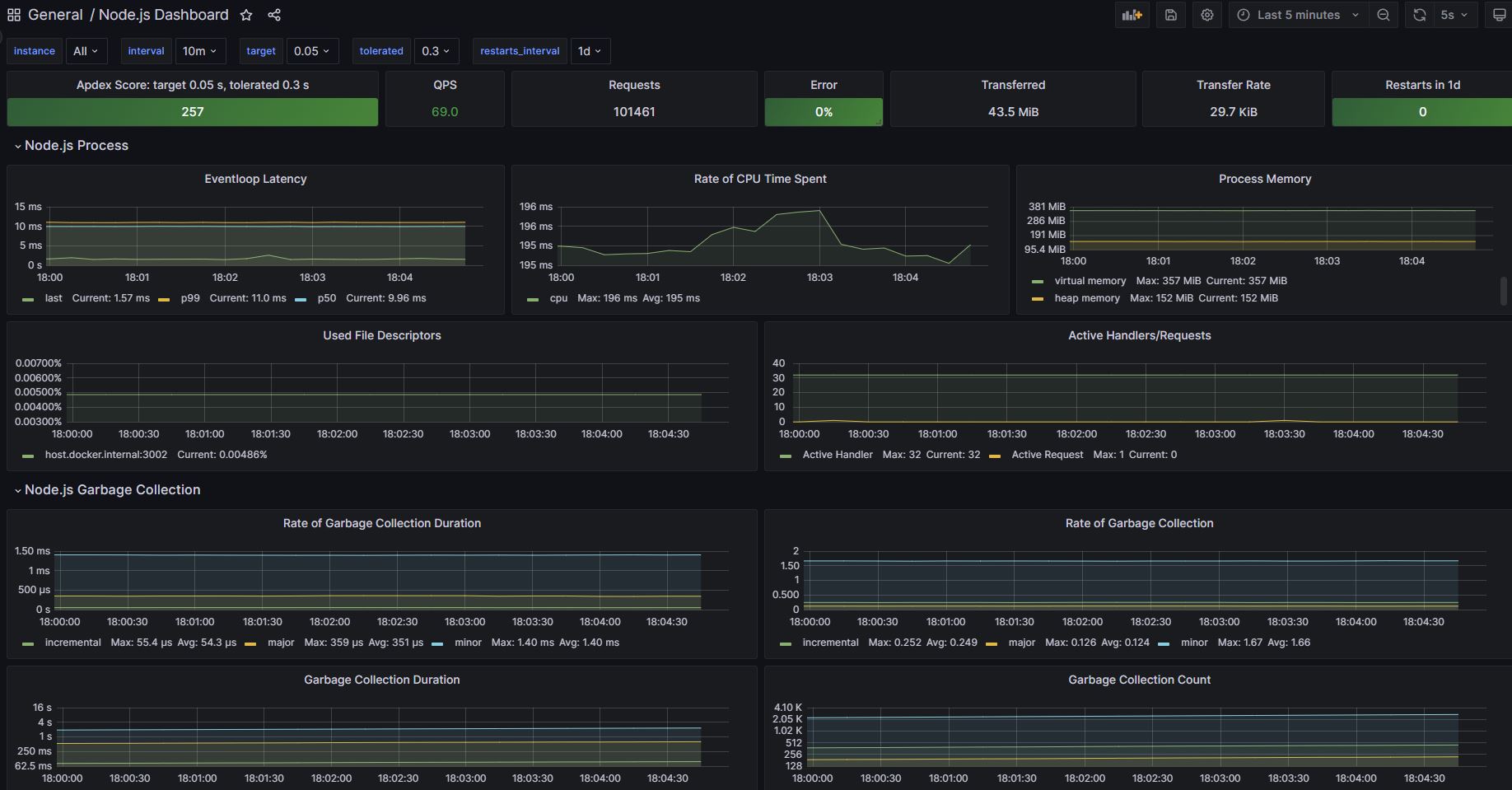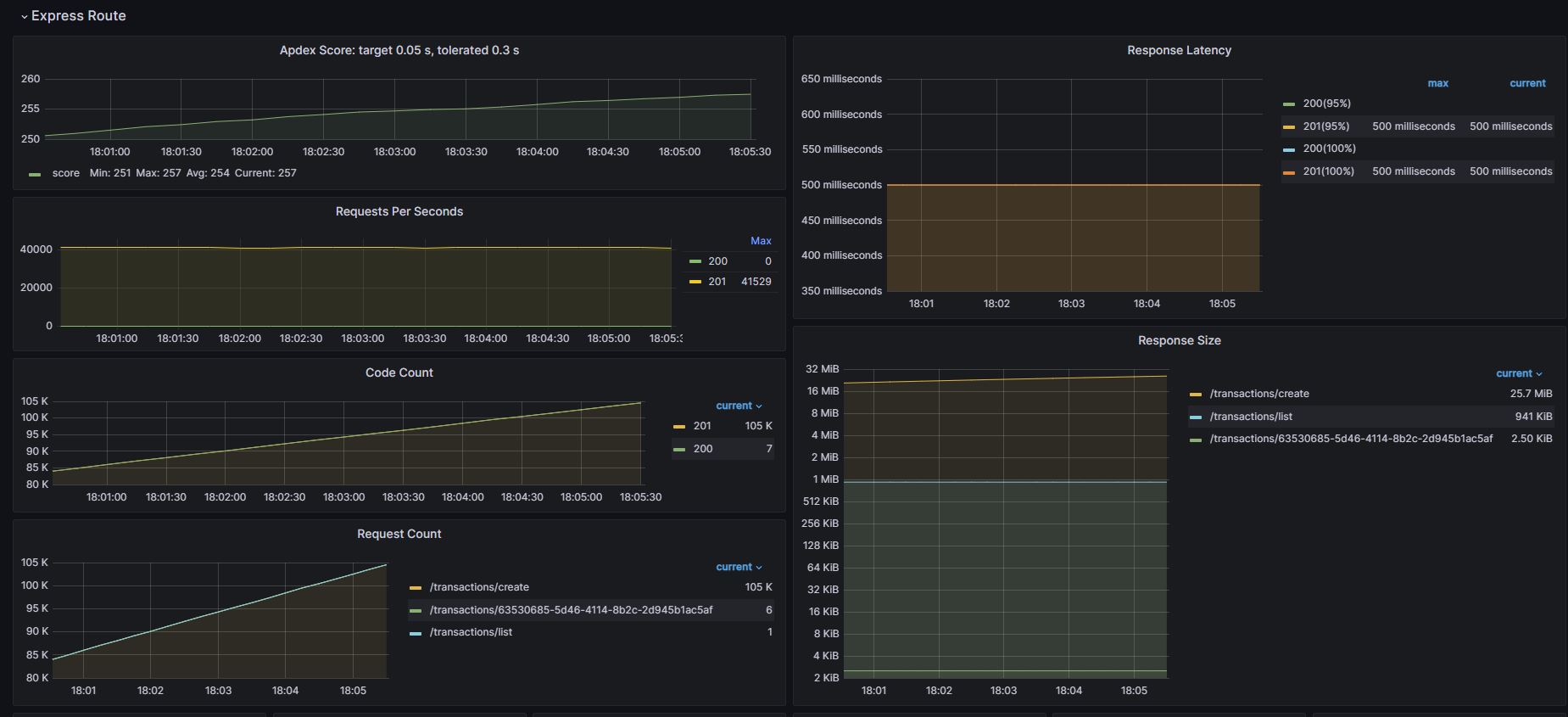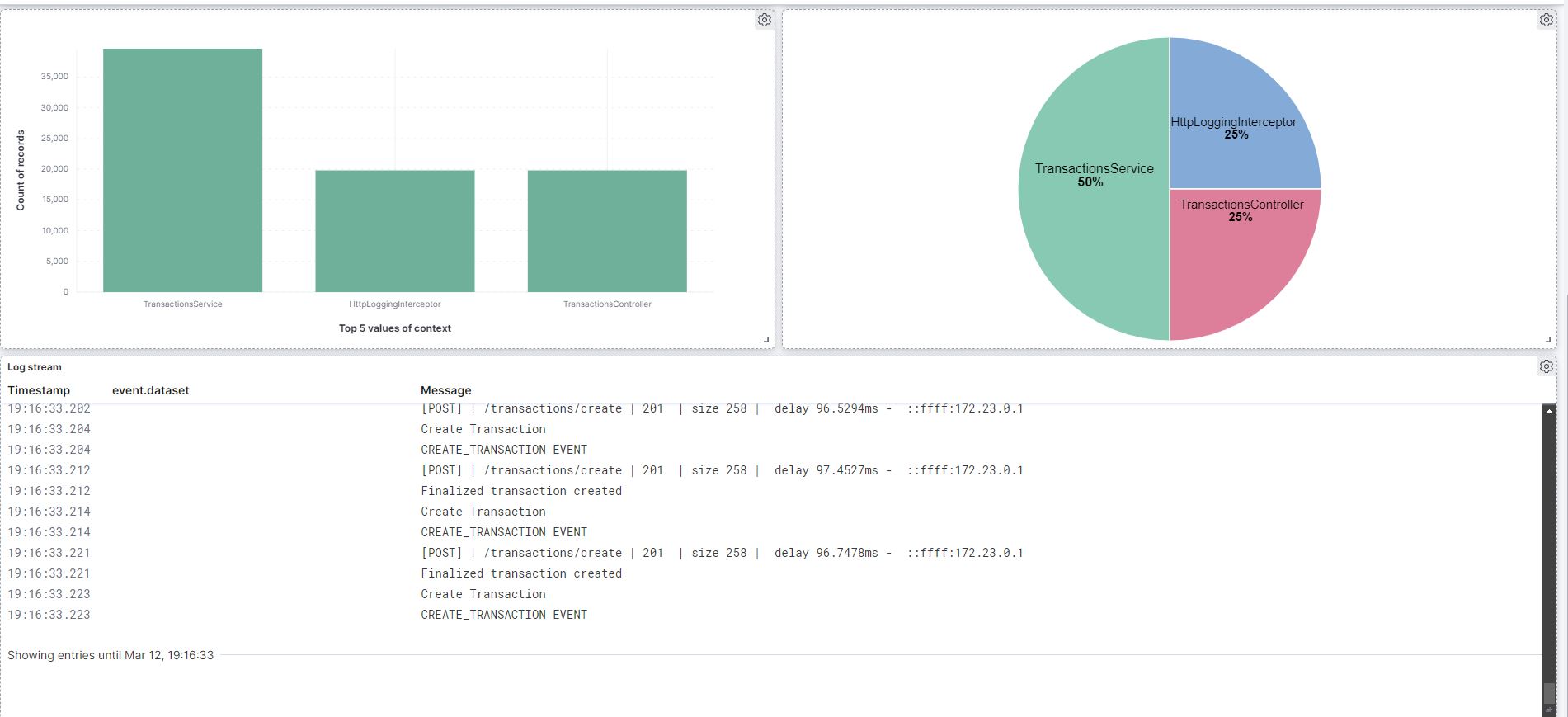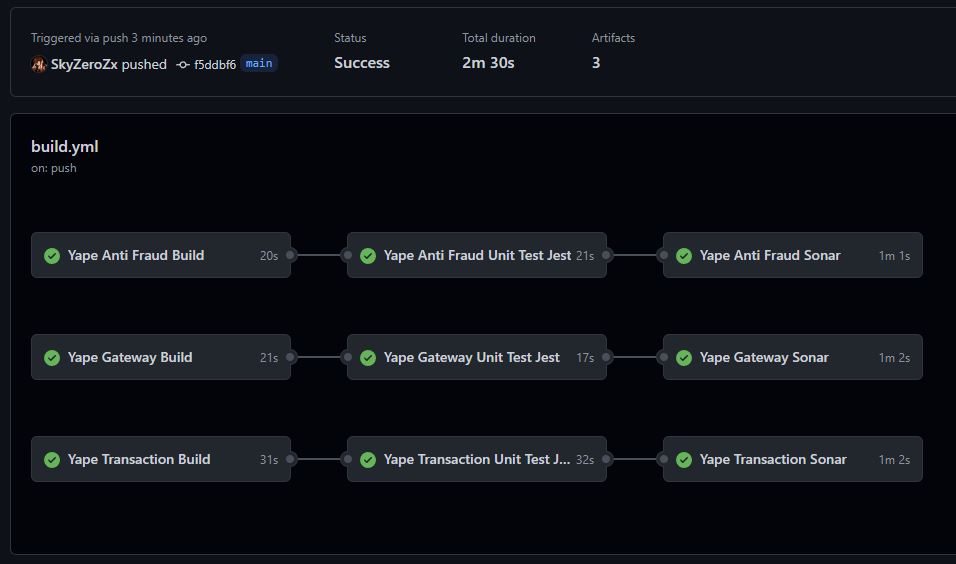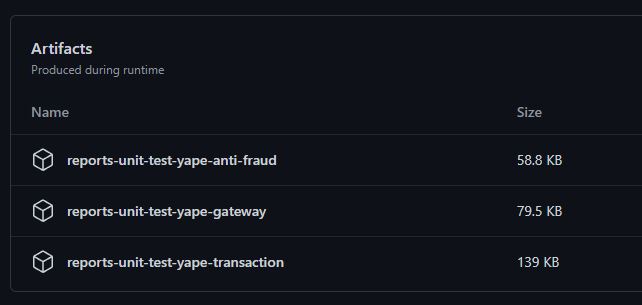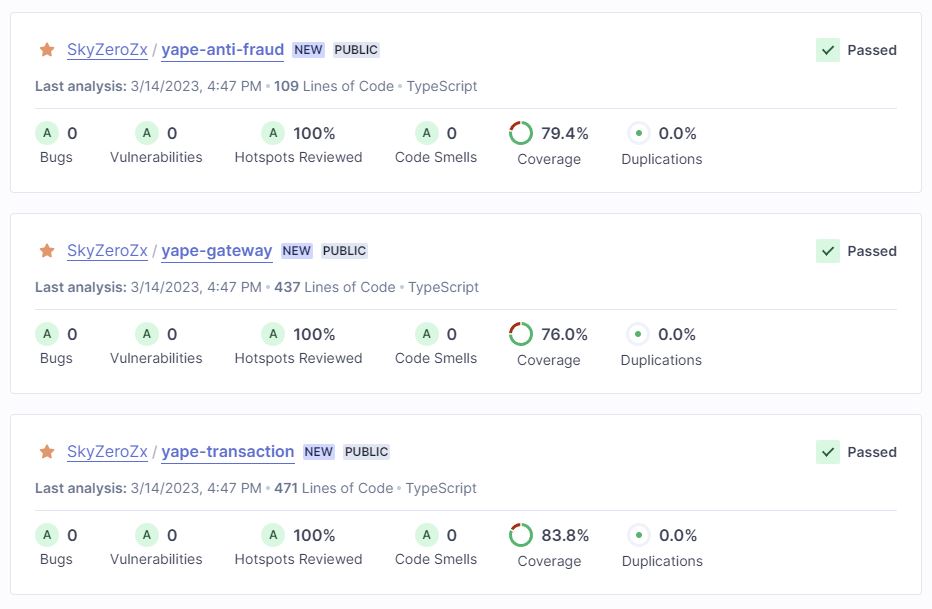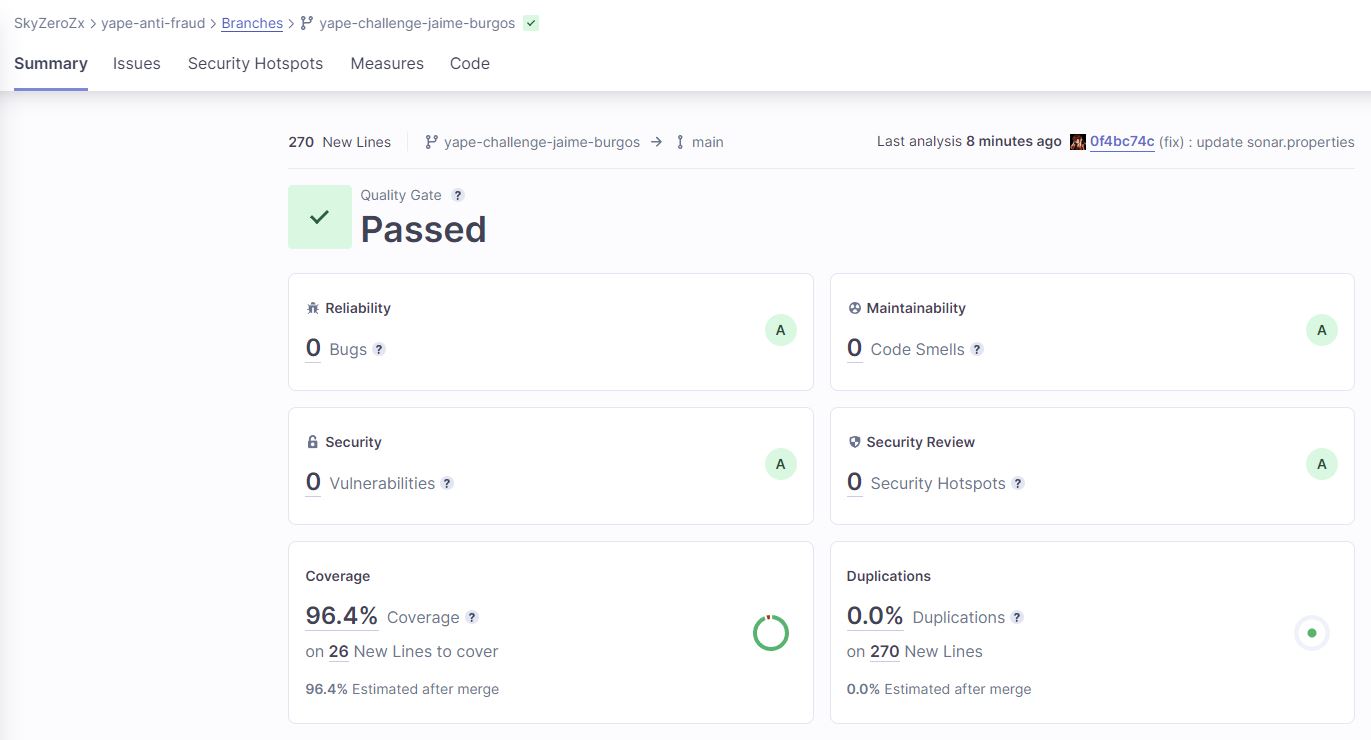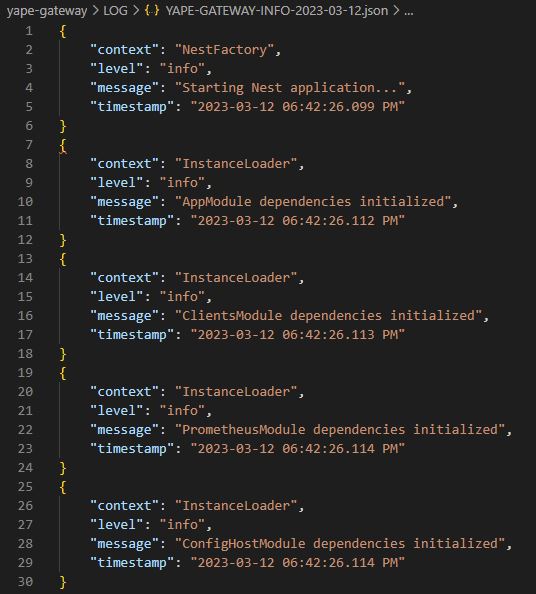Our code challenge will let you marvel us with your Jedi coding skills 😄.
Don't forget that the proper way to submit your work is to fork the repo and create a PR 😉 ... have fun !!
Every time a financial transaction is created it must be validated by our anti-fraud microservice and then the same service sends a message back to update the transaction status. For now, we have only three transaction statuses:
- pending
- approved
- rejected
Every transaction with a value greater than 1000 should be rejected.
flowchart LR
Transaction -- Save Transaction with pending Status --> transactionDatabase[(Database)]
Transaction --Send transaction Created event--> Anti-Fraud
Anti-Fraud -- Send transaction Status Approved event--> Transaction
Anti-Fraud -- Send transaction Status Rejected event--> Transaction
Transaction -- Update transaction Status event--> transactionDatabase[(Database)]
- Node. You can use any framework you want (i.e. Nestjs with an ORM like TypeOrm or Prisma)
- Any database
- Kafka
We do provide a Dockerfile to help you get started with a dev environment.
You must have two resources:
- Resource to create a transaction that must containt:
{
"accountExternalIdDebit": "Guid",
"accountExternalIdCredit": "Guid",
"tranferTypeId": 1,
"value": 120
}- Resource to retrieve a transaction
{
"transactionExternalId": "Guid",
"transactionType": {
"name": ""
},
"transactionStatus": {
"name": ""
},
"value": 120,
"createdAt": "Date"
}You can use any approach to store transaction data but you should consider that we may deal with high volume scenarios where we have a huge amount of writes and reads for the same data at the same time. How would you tackle this requirement?
You can use Graphql;
When you finish your challenge, after forking a repository, you must open a pull request to our repository. There are no limitations to the implementation, you can follow the programming paradigm, modularization, and style that you feel is the most appropriate solution.
If you have any questions, please let us know.
Description of the solution
-
An
API Yape Gatewayfor connecting clients with create transaction & retrieve transactions functionality via HTTP (REST API). -
A
Yape Transaction MicroService, which records transaction information in the POSTGRESQL DB and storage in cache Redis. -
An
Yape Anti-Fraud MicroService, which extracts from the queue the transactions that have been registered to be validated and consider them approved or rejected according to the criteriaCriteria Status > 1000 Rejected <= 1000 Approved
Note : Additionally, it could be clustered to improve performance or use a container orchestrator such as Kubernetes.
- NodeJS : NestJS , TypeORM , NPM
- PostgreSQL
- Kafka
- Redis ( for caching transactions )
Aditional features of the solution
- Dockerization of the project
- Swagger for API documentation
- Wiston Logger for conservation and rotating logs if required
- Unit Test validate correct operation of the logic
- GitHub Action CI for run unit test for each module and use SonarCloud for Clean Code
- Prometheus and Grafana for monitoring
- ELK Stack for monitoring logs
- Stress tests with JMeter
Run the following command to pull up the application containers
docker compose -f "docker-compose.yml" up -d --build
Test endpoint in route https://localhost:3002/transactions with the method POST
{
"accountExternalIdDebit": "e7991681-16bd-4a57-b112-a96796ba4a21",
"accountExternalIdCredit": "e7991681-16bd-4557-b112-a96796ba4a21",
"tranferTypeId": 1,
"value": 555
}Test endpoint in route https://localhost:3002/transactions/YOUR_TRANSACTION_EXTERNAL_ID
Test endpoint in route https://localhost:3002/transactions?page=${page}&take=${take} list transaction with paginate
| Parameters | Description |
|---|---|
| page | Page of list |
| take | Size of list |
Other option use the collection of postman yape_challenge.postman_collection.json in postman folder
Other option use Swagger documentation deployment in the route by default https://localhost:3002/docs
Example Response
- Create transaction
- Find transaction by transactionExternalId
- Find All transactions
Unit tests were performed for each microservice (transactions and anti-fraud) and API Gateway , in their respective folders run the command
npm run test:cov
The result will be code coverage and report generation to be used in SonarQube/SonarCloud in the folder coverage for each proyect
Grafana and Prometheus were used to monitor API Gateway metrics as well as validate its correct operation at all times.
For use the build dashboard import the file grafana-yape-gateway of the folder dashboard
To use the built dashboard go to the route https://localhost:2525/ enter the credentials
| Credentials | Value |
|---|---|
| user | admin |
| password | changeme |
The ELK Stack was used for monitoring and log ingestion ( Deaviantony Docker ELK repository was taken for reference built)
For use the build dashboard import the file kibana-yape-gateway of the folder dashboard
To use the built dashboard go to the route https://localhost:5601/ enter the credentials
| Credentials | Value |
|---|---|
| user | elastic |
| password | changeme |
Github actions were used for a continuous integration process, the unit tests of each project are executed and later analyzed by the SonarCloud service
After the execution of the workflow, the artifacts-reports-unit-test are generated, which contain the coverage report generated.
Finally, the sonar is executed, taking the coverage of the generated artifacts and analyzing the code.
Integrated winston to replace the NestJS logger to track and preserve logs as required.
By default, the folder where the logs are saved is LOG , the configured format is JSON.
JMeter was used to perform the stress test.
The test used can be found in the folder jmeter file stress_testing.jmx
Obtaining the following results



